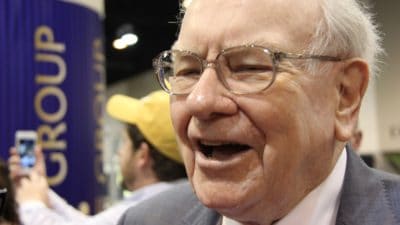When it comes to earning passive income, this quote from American tycoon John D Rockefeller springs to mind: “Do you know the only thing that gives me pleasure? It’s to see my dividends coming in.”
Getting cash from companies
While I’ll never be as wealthy as ‘the richest person in modern history’, I still enjoy being paid dividends to own stakes in companies. For example, my wife and I own 20 different FTSE 350 shares for their attractive cash payouts.
However, one problem with dividends is that most London-listed companies don’t pay any to shareholders. Instead, some firms reinvest their profits to boost future growth, while others don’t generate enough cash to return to shareholders.
A second problem with this passive income is that future dividends are not guaranteed. Thus, they can be cut or cancelled at short notice. Indeed, this happened often during the Covid-19 crisis of 2020-21.
Three hefty FTSE 100 dividends
Currently, the elite FTSE 100 index offers a dividend yield of around 4% a year. But digging deeper reveals dozens of stocks offering market-beating cash payouts.
For example, take these three high-yielding Footsie shares, each of which provides a dividend yield of over 8.5% a year. For the record, my wife and I own all three as part of our diversified, UK-based income portfolio.
| Company | Business | Market value | Share price | Dividend yield | One-year change | Five-year change |
| Vodafone Group | Telecoms | £19.1bn | 70.94p | 10.9% | -28.1% | -48.1% |
| Phoenix Group Holdings | Asset management | £5.1bn | 510p | 10.2% | -19.8% | -26.3% |
| M&G | Asset management | £5.5bn | 230.7p | 8.6% | +6.6% | N/A |
My tables shows three FTSE 100 firms with dividend yields ranging from 8.6% to 10.9% a year. Across all three stocks, the average cash yield is a juicy 9.9% a year. That’s almost 2.5 times the wider index’s yearly payout.
So all I need to do to get rich is to buy high-yielding stocks and reinvest their dividends into buying yet more shares, right? Wrong, because investing in the stock market is never that easy.
High yields can mean high risk
For instance, had I bought Vodafone Group shares five years ago, I’d have lost almost half my money. Even five years of steady dividends wouldn’t have flipped that negative into a positive.
As it happens, my wife and I invested in this stock in December 2022, following steep falls in the share price. We paid 90.2p a share for our stake. Alas, this downtrend continued, with the price crashing to a 52-week low of 62.59p on 12 February 2024.
On Friday (8 March) Vodafone shares closed at 70.94p, leaving us nursing a paper loss of 21.3% since we bought. Even worse, we are still down after banking €0.09 (7p) a share in dividends received to date.
Furthermore, Vodafone’s future dividends could be under threat if it doesn’t generate enough cash. Indeed, it has net debt of €33.4bn (£28.4bn) to service — more than its current market valuation. Still, at least this burden is coming down year on year.
In summary, while I love dividend investing for passive income, it’s not an easy, one-way ticket to wealth. As I know all too well, investments and the income from them may go down as well as up!








